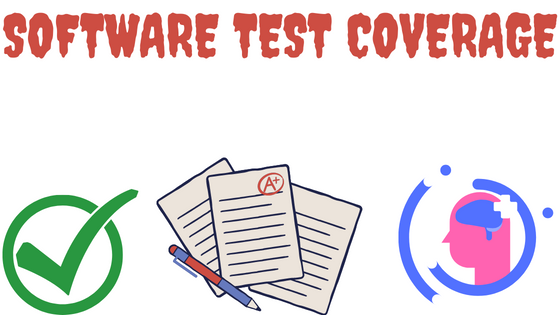Table of Contents
Discover the Shocking Truth About Manual Testing – You Won’t Believe What It Reveals!
Introduction of Software Manual Testing
In the fast-paced world of software development, manual testing plays a crucial role in ensuring the quality and reliability of software applications. This comprehensive guide will take you through the ins and outs of manual testing, equipping you with the knowledge and skills to become a proficient tester.

1. Fundamentals of Manual Testing
Before diving into the various techniques and methodologies of manual testing, it’s essential to grasp the core testing process.
a. Understanding the Testing Process
The testing process involves planning, designing, executing, and reporting tests to identify defects and ensure software quality.
b. Test Planning and Documentation
Effective test planning and documentation lay the foundation for a successful manual testing endeavor. Key considerations include:
– Identifying testing objectives and goals
– Defining test scope and coverage
– Creating a comprehensive test plan
– Documenting test cases and test scripts
2. Test Design Techniques
Equipped with a solid understanding of the testing process, let’s explore some essential test design techniques to optimize test coverage and effectiveness.
a. Equivalence Partitioning
Equivalence partitioning is a powerful technique that optimizes test coverage while minimizing the number of test cases. By dividing input data into equivalent classes, testers can focus on representative test cases to uncover defects efficiently.
b. Boundary Value Analysis
Boundary value analysis enables testers to focus on the edges of input boundaries, where defects often lurk. By selecting test cases that represent the boundaries, testers can identify potential issues related to minimum and maximum values.
c. Decision Table Testing
Decision table testing aids in evaluating the interaction of different conditions and inputs, leading to more comprehensive test coverage. By creating decision tables that map inputs, conditions, and corresponding actions, testers can systematically derive test cases and ensure thorough testing.
3. Test Execution and Defect Reporting
Executing tests meticulously and capturing accurate results are essential for efficient manual testing. Furthermore, effective defect reporting ensures clear communication with the development team.
a. Test Execution Process
Test execution involves running test cases, capturing test results, and analyzing outcomes. The key steps in the test execution process include:
– Preparing the test environment
– Executing test cases
– Logging test results
– Analyzing and interpreting test results
b. Effective Defect Reporting
Reporting defects clearly and concisely is crucial for effective communication with the development team. Essential aspects of defect reporting include:
– Capturing relevant information (steps to reproduce, expected and actual results)
– Prioritizing and categorizing defects
– Providing screenshots or videos, if applicable
– Tracking and following up on reported defects
4. Test Case Management and Regression Testing
Efficient test case management and regression testing are vital to ensure test repeatability, maintainability, and overall software quality.
a. Test Case Management Tools
Test case management tools streamline the organization and maintenance of test cases, making the testing process more efficient. Key features and benefits of these tools include:
– Repository and version control
– Traceability and coverage analysis
– Scheduling and execution tracking
b. Regression Testing
Regression testing ensures that new changes and bug fixes do not introduce new defects or disrupt existing functionality. This section covers:
– Regression testing approaches (selective, full, or partial)
– Identifying regression test suites
– Test prioritization and impact analysis
5. Best Practices for Manual Testing
To become a proficient manual tester, it’s crucial to follow industry best practices and adopt efficient techniques.
a. Test Environment Setup
Creating a stable and representative test environment is essential for accurate and reliable test results. Key considerations include:
– Emulating production-like environments
– Managing test data and dependencies
– Ensuring test environment consistency
b. Test Data Management
Managing test data effectively is crucial to ensure test repeatability and consistency. Key aspects of test data management include:
– Identifying and generating test data
– Data privacy and security considerations
– Test data cleansing and obfuscation
c. Collaboration and Communication
Efficient collaboration and communication among team members foster a collaborative testing environment. Best practices include:
– Regular team meetings and knowledge-sharing sessions
– Using collaboration tools and platforms
– Clear and concise communication channels
Conclusion: Empowering Quality Assurance through Manual Testing
Manual testing remains an indispensable part of the quality assurance process, empowering testers to uncover critical defects and ensure a seamless user experience.
FAQ Section
Q1: What is the difference between manual testing and automated testing?
A1: Manual testing involves executing tests manually, while automated testing involves using tools and scripts to execute tests automatically.
Q2: When should I choose manual testing over automated testing?
A2: Manual testing is beneficial when the software requires human observation, subjective evaluation, or ad-hoc testing scenarios.
Q3: How can I ensure comprehensive test coverage in manual testing?
A3: Techniques like equivalence partitioning, boundary value analysis, and decision table testing can help achieve comprehensive test coverage.
Q4: What are some common challenges in manual testing?
A4: Common challenges include time constraints, repetitive tasks, and the need for extensive domain knowledge.
Q5: Can manual testing be performed in an Agile development environment?
A5: Yes, manual testing can be integrated into Agile methodologies by adopting iterative testing practices, involving testers early in the development cycle, and leveraging collaborative tools.
Remember, this guide provides a comprehensive overview of manual testing, but it’s important to continuously adapt and learn as the field evolves. Mastering manual testing requires hands-on practice, continuous learning, and staying up to date with industry trends and best practices.


